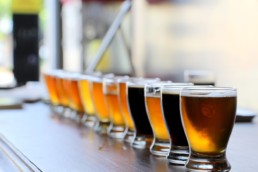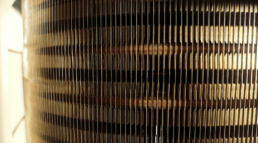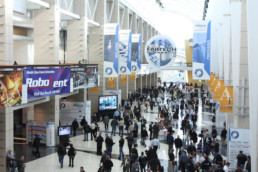Process Chillers in the Brewing Industry
Why are process chillers so important to the brewing process?
Making the perfect brew requires a lot of preparation and effort. You combine the freshest ingredients, proper techniques, and specialized equipment. But arguably the most important component is the ability to accurately control the temperature throughout the brewing process. Having quality temperature control matters for the quality of the final product. The best way to achieve this control is with an accurate and reliable process chiller.
There are six main steps in the typical brewing process. As the materials
move from raw grains to sugary wort to finished beer, the heat or lack of it
directly impacts the progress made. With each stage comes a new version of the
product, with temperature acting as the driving force.
The heating stages:
The first two stages, mashing and sparging, involve adding hot water to a
mixture of malt. The hot water releases the sugars from the grains. Yeast in
later stages feed on these sugars to transform the liquid (now known as wort)
into beer. The added water needs to be very hot in order to release as much of
the sugars from the malt as possible. If not enough sugar is released, the
yeast will not be able to effectively ferment the liquid in later stages.
Boiling the wort is the third stage. This step is important to kill any
microorganisms and to create a welcoming environment for the hops. The
specifics of the batch will determine the amount and timing of the hops'
addition. Hops, in combination with temperature, act as a key component in
determining final flavor.
The cooling stages
The next stage is when your chiller first makes its appearance. Once the wort has been sufficiently boiled, it will need to be quickly cooled. Not only does the quick cooling prevent the growth of more microorganisms, it also creates the proper temperature to finally add the yeast. If it’s too hot, the yeast will die and prevent the fermentation process from continuing.
Cooling Wort
Usually a chiller pumps coolant through a coiled tube immersed in the hot wort. Wort cooling can also be accomplished in a jacketed vessel or a plate heat exchanger. The coolant, most often a glycol-water mixture, is significantly cooler than the wort. As the coolant moves through the tube, it quickly absorbs the heat from the wort, efficiently cooling the wort to the desired temperature. The exiting coolant, now warmed by heat exchange with the wort, will return in a closed loop to the chiller to be cooled to the necessary temperature once again.
Fermentation
Fermentation is the next stage. Here it is absolutely crucial to reach and maintain the proper temperature. Once the wort has been cooled, the yeast can be added. As the yeast slowly consumes the extracted sugars in the mixture, it produces CO2 gas and ethyl alcohol. Depending on the specifics of the brew, this process can take many weeks. During this time, the mixture must stay at a consistent temperature. If the temperature changes too much, the fermentation process could stop and affect the final flavor.
Yet again, the glycol process chiller becomes important. Fermentation is an exothermic process, meaning it produces heat as it progresses. The longer the wort ferments, the more heat it produces. The brewery chiller removes heat in order to keep the beer taste consistent across batches. Built in temperature controls on Chase Chiller models make this process easier by telling you exactly how the system is performing. The rate of heat transfer is directly proportional to the difference between temperature of the cooled item and the temperature of the coolant. The proper coolant temperature depends on the desired fermentation temperature.
Packaging
Mechanical cooling may also be involved in the final stage of the process: packaging. In order to prevent further fermentation or product change the right temperature is needed. Sometimes the bottling or canning process generates heat that should not be transferred to the finished product. Process chillers can help to maintain the right temperature as the product moves through the packaging line.
Temperature control is crucial in every step of the brewing process. Strong, reliable process chillers, like those from Chase Cooling Systems, bring that support level. So, let a dependable Chase Chiller find the proper cooling balance for consistent products for your system.
Water-Cooled vs. Air-Cooled Chillers
What’s the Difference Between Water-Cooled and Air-Cooled Chillers?
Two main types of industrial chillers exist: water-cooled and air-cooled. Though both chiller types cool industrial process fluids, how the system rejects the extracted heat differs. The needs of the overall refrigeration system therefore determine the best chiller model. Understanding these various strengths makes choosing a proper system design easier.
Chiller Operation Overview
All industrial chillers have the same basic components: evaporator, compressor, expansion device and condenser. They utilize a closed loop refrigeration circuit to cool a fluid (typically water or a water/glycol mixture). The compressor circulates the refrigerant through the closed loop, from condenser to expansion device to the evaporator and, finally, back to the compressor. As the refrigerant flows through the circuit, the expansion device, usually a valve or a capillary tube, meters it. The evaporator extracts the heat, lowering the fluid temperature and raising the refrigerant temperature. The closed loop system means that the extracted heat must be expelled elsewhere from the system. This role falls to the condenser. Refrigerant heated by the evaporator fluid and the compressor, enters the condenser. How the condenser cools the refrigerant determines the key difference between water-cooled and air-cooled chillers.
Differences in the Condenser
Air-cooled chillers have condensers that use ambient air to cool hot refrigerant. They are similar in construction to the radiator on a car or the outdoor portion of a home air conditioner. Refrigerant flows through a series of tubes mechanically assembled with an array of closely spaced fins. A fan blows ambient air through the fins and over the outside of the tubes, cooling the refrigerant flowing inside. The excess heat is released to the air and can be recovered for use elsewhere in the facility.
Contrastingly, water-cooled chillers use water to cool the refrigerant in the condenser. Water-cooled condensers are typically tube-in-tube, tube-in-shell, or plate-type heat exchangers in which water from a cooling tower or other water source cools the refrigerant. The refrigerant and cooling water do not come in direct contact with each other, rather they flow in separate passageways within the heat exchanger which are in close contact for efficient heat transfer. The water flows over the refrigerant tubes and absorbs the excess heat, thus lowering the refrigerant to the necessary temperature for use in the system.
Environmental Installation considerations
Though a great deal of variety exists within both air-cooled and water-cooled chillers, some general installation rules do apply. Knowing the ultimate arrangement of a system can help to guide your chiller choice. For each of the following situations, the most practical chiller type is described.
Indoor areas:
Both air-cooled and water-cooled chillers are installable indoors. However, the chiller type will dictate the room’s arrangement. Indoor air-cooled chillers need ventilation to the outside. Sufficient fresh make-up air allows for the maintenance of a suitable temperature within the space. Water-cooled chillers do not require ventilation or fresh make-up air. They are almost exclusively installed indoors. Since they use water for cooling, the water conducts the heat out of the room, eventually exhausted to ambient, often via a cooling tower.
Outdoor Areas:
Almost all outdoor installations will be air-cooled chillers . In these installations, the heat rejected at the condenser simply dissipates into the ambient air. Outdoor installations require properly configured electrical control panels, based on the expected range of environmental conditions.
High Temperature Environments:
Water-cooled chillers work great in high temperature environments since they do not rely on ambient air for cooling. Thus, they can be placed in hot mechanical rooms or in spaces with minimal ventilation.
Small Spaces:
The condenser on water-cooled chillers is more compact than an equivalently sized air-cooled unit. This can result in an overall smaller unit, especially in the case of high capacity chillers. However, the entire refrigeration system will still require sufficient space.
Water-scarce areas:
Use an air-cooled unit. The cooling medium, ambient air, does not require any connections. Nor does a chiller with an air-cooled condenser need a cooling tower. These installations have lower overall environmental concerns surrounding water treatment and removal. An air-cooled chiller should be the best choice for water conservation.
Cost considerations
As with any equipment purchase, price will be a consideration. However, the difference in initial cost between an air-cooled and a water-cooled chiller may be misleading. Instead, it is important to factor in all lifetime costs to create the most accurate comparison.
With indoor installation of an air-cooled chiller, costs associated with duct work, fans, and controls for maintaining proper air temperature in the room may exist. Energy consumption costs may be higher for these chiller models due to its basic operating design.
Often times water-cooled units have a lower initial price. However, they generally have more operational costs, and will typically require the installation of a cooling tower. When using a cooling tower in conjunction with a water-cooled chiller, additional costs may accrue from the regular monitoring of water quality, treatment of the water, and the operation of fans and pumps. However, water-cooled chillers allow the refrigeration system to operate at lower head pressure, making them more efficient and less costly to operate than air-cooled chillers.
Factors such as water costs, efficiency ratings, and electricity can dramatically change the lifetime price of a chiller.
Which one do I choose?
If you are uncertain about how to select the right chiller for your system, our cooling engineering experts are always available to help. Use these sizing factors to gain quick insight into what your system requires.
If after all these considerations, you still cannot make a decision, focus on cooling capacity. Use the process itself to determine the required cooling amount. This is the number one factor in determining the proper chiller size for your system.
Choosing between water-cooled and air-cooled chillers is not an easy process. However, with the right support and expertise, working through your system’s individual needs will lead to the best equipment purchase for YOU.
Be sure to explore the main chiller options available from Chase Cooling Systems.
FABTECH 2018: Bringing Reliable Process Cooling to the Metalworking Industry
Bringing Reliable Process Cooling to the Metalworking Industry
We are proud to announce that Chase Cooling Systems will be exhibiting at FABTECH 2018. FABTECH is North America’s largest metal forming, fabricating, welding and finishing event. The annual conference cosponsored by The Fabricators and Manufacturers Association, SME, The American Welding Society, Precision Metalforming Association, and Chemical Coaters Association International will be held November 6-8 at the Georgia World Congress Center in Atlanta, GA.
FABTECH connects sellers and buyers in a centralized location to discuss products, industry changes, and more. With a mixture of product specific exhibitors, educational sessions, and inspiring lectures, FABTECH is projected to draw 30,000 people in the manufacturing sphere. Representatives from Chase Cooling Systems will be located in Booth B8673 to discuss process cooling specifications, applications, and products.
Chase Chiller models from the QBE and QBS series will be on display in Booth B8673 for viewing. With their small size, portability, and power, these chiller series are particularly applicable to the metalworking industry.
The QBE series of air-cooled chillers from Chase Cooling Systems comes fully packaged with refrigeration system, controls, storage tank, and pump. The machines are simple to set-up and integrate well into both OEM equipment and with existing machinery. Cooling capacity ranges from 0.5 to 7 tons, and models include non-ferrous fluid circuits. The customization possibilities of QBE chillers meet a diverse range of applications from resistance welding to lasers to EDM.
The QBS series of portable industrial chillers has up to 0.5 ton of cooling capacity. It is especially suitable for welders. With both 115/1/60 and 230/1/60 versions available, and a small size of 18.4” W X 20.2” D X 24” H, moving the unit from process to process is easy. Optional wheels exist for additional portability. Like the QBE series, all models come fully packaged and include a non-ferrous fluid circuit, an insulated 4-gallon tank, and an integral pump.
In addition to the QBE and QBS chiller models, Booth B8673 will have a dry cooler unit on display. ACW dry coolers use ambient air to cool small, point-of-use applications.
Anyone interested in attending FABTECH 2018 can do so for free by using the promo code 16029733 or by registering at this customized link. We hope to see you there!
More information about FABTECH 2018 can be found at their website: https://www.fabtechexpo.com/
To follow Chase Cooling Systems’ adventures at FABTECH and beyond, be sure to visit our Facebook and Twitter pages.



